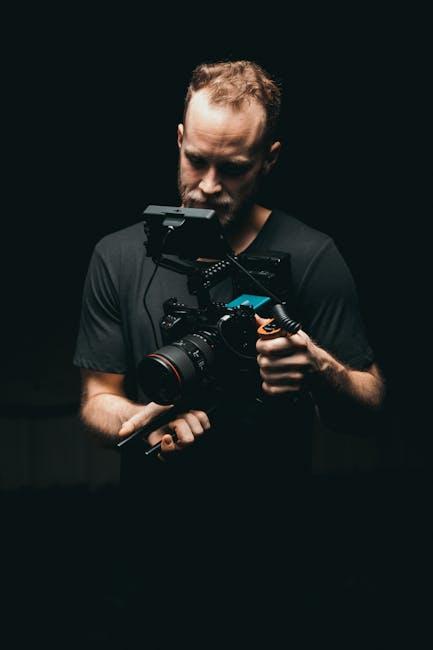In the ever-evolving landscape of cinema, the delicate balance between artistic vision and audience expectation remains a perennial challenge for filmmakers. As the industry becomes increasingly data-driven, with box office numbers and streaming metrics shaping the contours of success, the pressure to conform to audience demands has intensified. This article delves into the intricate dynamics at play, exploring whether filmmakers are compromising their creative integrity to satisfy viewers’ preferences. By examining the interplay between commercial viability and artistic expression, we seek to uncover the extent to which audience expectations influence cinematic storytelling and the potential implications for the future of filmmaking.
Impact of Audience Expectations on Creative Vision
Filmmakers often find themselves navigating the intricate balance between artistic integrity and the commercial viability of their projects. Audience expectations can act as both a guiding light and a restrictive barrier. On one hand, understanding what the audience desires can lead to significant box office success and cultural impact. However, this often comes at the cost of creative freedom. The need to align with popular trends or genre conventions may compel directors to make compromises, diluting their original vision. This tension raises critical questions about the authenticity of the art being produced.
- Market Trends: Filmmakers may feel pressured to include popular elements, such as certain plot devices or character archetypes, to ensure financial success.
- Genre Expectations: Straying from established norms within a genre might alienate audiences, leading to safer, less innovative storytelling.
- Feedback Loops: With instant feedback through social media, filmmakers are constantly aware of audience reactions, which can influence ongoing projects.
Ultimately, the challenge lies in creating a film that resonates with audiences while remaining true to the filmmaker’s unique voice. Balancing these elements is a delicate art form, and while audience expectations cannot be ignored, they should not overshadow the visionary creativity that drives the film industry forward.

Analyzing the Balance Between Artistry and Commercial Success
In the film industry, the dance between artistic vision and commercial viability is a delicate one. Filmmakers often find themselves at a crossroads, where staying true to their creative instincts might not align with the expectations of a mainstream audience. Artistry involves pushing boundaries, experimenting with storytelling, and taking risks that may not always guarantee box office success. On the other hand, commercial success typically requires aligning with market trends, catering to audience preferences, and sometimes compromising on originality to ensure profitability.
- Audience Expectations: Filmmakers may feel compelled to deliver what is familiar and safe to ensure financial returns.
- Studio Pressures: Studios often prioritize projects that promise high returns, which can stifle creativity.
- Creative Compromise: Balancing vision with marketability can lead to diluted storytelling.
Striking the right balance is key. While some directors manage to infuse unique artistry into commercially successful films, others may sacrifice one for the other. Ultimately, the challenge lies in navigating these pressures without losing the essence of creative expression.

The Role of Market Research in Shaping Film Content
Market research plays a pivotal role in the film industry, often serving as the backbone for major creative decisions. By analyzing audience demographics, preferences, and viewing habits, filmmakers can tailor their content to meet the desires of their target audience. This data-driven approach can lead to increased box office success and audience engagement. However, it also raises the question of whether artistic vision is being sacrificed for the sake of commercial viability.
Filmmakers might feel compelled to align their narratives with trends identified in market research, which can lead to a homogenization of content. Consider the following influences:
- Genre Preferences: If market research indicates a surge in demand for superhero films, studios might prioritize these over more niche genres.
- Character Archetypes: Data showing a preference for specific character traits can result in repetitive character development.
- Plot Structures: Familiar plotlines that have historically performed well may be favored, potentially stifling originality.
While market research can enhance the likelihood of a film’s success, it can also pose challenges to innovation, potentially limiting the scope of storytelling in cinema.

Recommendations for Filmmakers Navigating Audience Demands
Filmmakers today face a dynamic landscape where balancing creative vision with audience expectations is crucial. While the pressure to cater to mainstream tastes is undeniable, filmmakers can leverage certain strategies to maintain authenticity while engaging viewers.
- Understand Your Audience: Use data analytics to gain insights into audience preferences without compromising artistic integrity. Tailor elements of your narrative that resonate with core viewers while preserving your unique voice.
- Innovate Within Familiar Frameworks: Experiment with storytelling techniques or visual styles that challenge traditional norms but still align with audience familiarity. This approach can help bridge the gap between innovation and expectation.
- Engage in Open Dialogue: Utilize social media platforms to interact directly with audiences. This not only builds a community around your work but also provides real-time feedback that can inform future projects.
By thoughtfully integrating these practices, filmmakers can navigate the fine line between artistic expression and audience satisfaction, ultimately creating work that is both impactful and widely appreciated.

